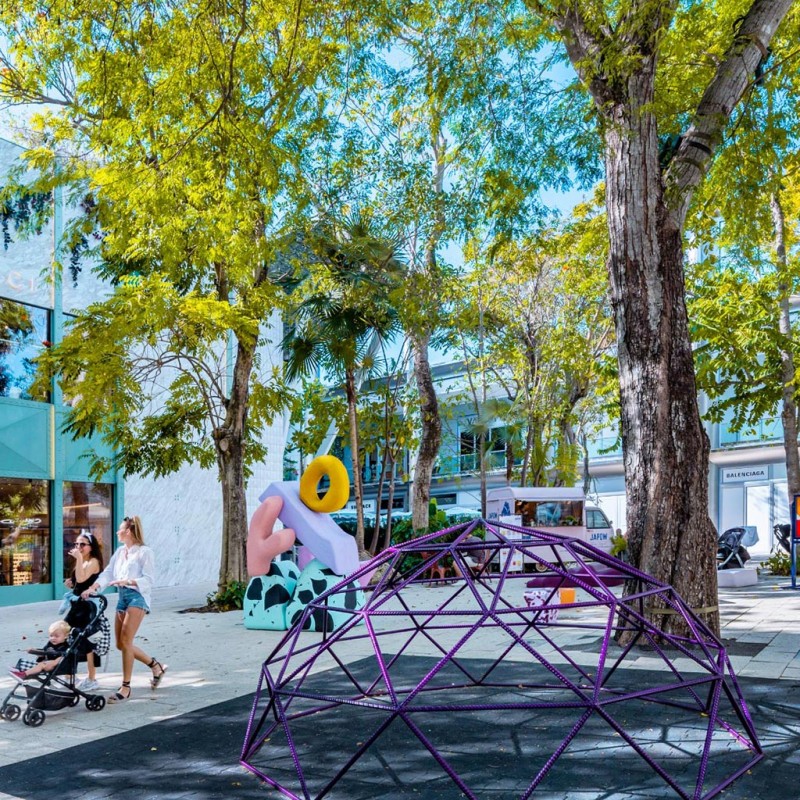

The Two Hottest Cities in America
Chavie LieberThe tech elite is headed down south, and fashion is right behind them.
Over the last 18 months, young, wealthy professionals have flooded into Miami, Florida and Austin, Texas, often after realising during the pandemic that they could make their crypto millions without having to endure freezing New York City winters or San Francisco Bay Area’s red-hot housing market.
Where young, rich Millennials go, boutique hotels and posh restaurants tend to follow. So do luxury brands.
In December, Chanel reportedly spent $40 million designing a two-story flagship in Miami’s Design District. Chanel general fashion manager Joyce Green told BoF that the store, its second in Miami, was “an opportunity to…connect with our clients in a key market with a unique and expanding local and international clientele.” Louis Vuitton opened its first US store that’s dedicated to menswear in Miami’s Design District, too. The RealReal just opened a pop-up inside Saks Fifth Avenue and Gen-Z favourite LoveShackFancy just opened a store in the leafy Coconut Grove neighbourhood. Kith is reportedly opening a second store in Miami.
In Austin, Gucci will open its first store in the city this Spring, while Hermès is also opening a boutique later this year. In November, Prada cited Austin as one of its next cities to target.
The two cities were hardly luxury deserts before the pandemic. Miami, in particular, has long been an international shopping destination, from the shops at Bal Harbour to trendy multi-brand retailers like The Webster. But brands are investing in both locations with a focus rarely seen outside New York or Los Angeles.
“Follow the money. This is where the new chefs want to come and where the high-profile people are moving,” said Alexis Piquero, a sociology professor at the University of Miami. “If I’m a business owner and I don’t have my eye on Miami or Austin, I am behind the curve.”
While fashion is keen to chase wealthy shoppers moving to these markets, those sales won’t come automatically. Tech entrepreneurs who wore T-shirts and jeans in San Francisco aren’t suddenly going to splurge on $945 Louis Vuitton drawstring shorts just because they’ve moved to Texas.
ByGeorge, a luxury fashion retailer with two locations in Austin, just had its best December in the company’s 40-year history. Brand president Molly Nutter attributed the company’s growth to the city’s new residents. She said womenswear from Dries van Noten, Jil Sander and The Row have been selling well, as has menswear from Boglioli, Loewe and Thom Browne.
“Right now, everything is selling well,” Nutter said. “But we did have to start thinking about sizing because we’re finding a broader range of sizes moving here. Often, Texas men are bigger guys and now we have smaller guys shopping with us than what we’ve had in the past.”
Young Money
Miami is a magnet for wealthy tourists from across Latin America, as well as New York “snowbirds” who spend winters in the city. Glistening beaches and a vibrant art scene also draw global visitors, who often make time for shopping in the Design District. Miami also regularly hosts big events that draw the fashion crowd, including Art Basel Miami and the recent Virgil Abloh tribute show.
By contrast, luxury brands have gone through several boom and bust cycles in Austin. The city has long been known for its universities, music scene and the annual South by Southwest conference. Although several luxury brands, including Tiffany and Burberry, opened big stores in Austin over a decade ago, the Texas capital never really became a true luxury destination. Neiman Marcus, founded over a century ago in Dallas, Migration to Miami tripled from July 2020 to July 2021, according to real estate firm Redfin, while Austin is America’s fastest-growing major metropolitan area, according to the U.S. Census Bureau. Financial firms Blackstone, Apollo Global Management and Moore Capital Management have all recently opened offices in Miami. The tech giants Oracle and Tesla moved their headquarters to Austin, and Apple, Meta and Google are all planning major office expansions there too.
Young tech employees seeking out these cities are searching for more living space and lower rent rates than New York or LA. It helps that Texas and Florida don’t have income tax either.
Austin has added several new high rises and the city is currently building a $3 billion “second downtown” in North Austin, which will include retail space. The city also just got a racetrack for Formula 1, the popular motorsport that’s beloved by the rich, which could draw in wealthy, international crowds of shoppers from Europe and Asia.
Real estate prices in Miami and Austin are ballooning, causing natives to complain about gentrification and inequality. Brands looking for prime real estate in Miami’s shopping neighbourhoods are finding themselves in bidding wars, said Barrie Scardina, head of American retail at real estate firm Cushman & Wakefield.
So far, strong sales are justifying the rising rents.
“The success of the store is unprecedented,” said Danny Harris, founder of Alo Yoga, which opened a store in Miami in December. “Miami is very athletic, diverse, and international.”
At The RealReal, men in Austin have been buying from Brunello Cucinelli (a label beloved by tech titans), in addition to streetwear brands like Off-White. In Miami, The RealReal has seen rising demand for men’s earrings, rings and Rolex watches.
“Miami wanted more bling, with jewellery and watches selling [well] while Austin is more subtle,” said Courtney Hawkins, vice president of retail at The RealReal, which, in addition to its Saks Miami pop up, opened a store in Austin in April. “The high-value, Birkin bags aren’t top sellers in Austin, but the Chanel, the Fendi and the Gucci ones are. It’s a market for bags $5,000 to $8,000.”
A Long Way From New York
The trends drawing more professionals to Austin and Miami look set to continue. Remote work is likely here to stay, and the arrival of big companies like Tesla means more people will plant roots.
“[These cities] are at the beginning of their growth journey,” said Scardina.
Still, the population boom won’t necessarily lead to the rise of another Rodeo Drive.
“Tech folk don’t understand European high fashion,” said Matt Mowell, a senior economist with real estate company CBRE. “Meanwhile, sales at the REI are going to be huge.”
“I wouldn’t say brands shouldn’t [open stores], but…cities have different cultures and part of that culture is how people spend their money,” he said.
Nutter of ByGeorge said even if shoppers aren’t trend-focused, the appetite for luxury fashion is palpable.
“It’s probably a stereotype to say tech doesn’t care about fashion because…brand and quality matter to them,” she said. “It’s not that everyone who works in tech is suddenly going to wear over-the-top editorial looks, but they don’t all wear only Patagonia and Allbirds.”
Some retailers are tweaking their product assortment to cater to entry-level luxury shoppers. The RealReal initially stocked its Austin store with expensive accessories from brands like Hermès, but eventually pivoted to more menswear, streetwear collectables and handbags from Chanel, Fendi and Balenciaga.
Alex Taub, a tech founder running a startup that builds infrastructure for DAOs, moved to Miami from New York City in July. He said he does plenty of window shopping at Miami’s Design District but is still only browsing.
“I wouldn’t buy a lot of things, but maybe I would buy something,” he said of the luxury boutiques in Miami. “But I’d also rather buy an NFT than a Bulgari watch.”
DOWNLOAD PDF ORIGINAL SOURCE